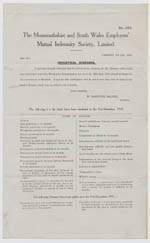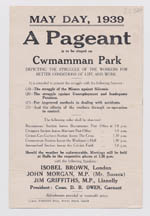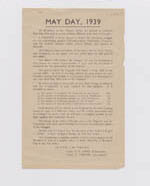 |
| You are here: Cwm > Themes > Medicine And Health > Occupational Health > : Mining Diseases | |
 | |
|
Mining Diseases |
|
|
|
|
|
|
|


 The first Workmen’s Compensation Act of 1897 remunerated workmen for ‘Accidental Injuries suffered in the course of their Employment’, but it did not recognize industrial diseases. This was amended in 1906 when a list of diseases was added, and by the 1916 Act these included diseases which affected coal-miners: Ankylostomiasis (miners’ worm disease), Miners’ Nystagmus, Weil's Disease, Subcutaneous cellulitis of hand (beat hand), Subcutaneous cellulitis over patella (miner’s beat knee), Acute bursitis over elbow (miner’s beat elbow), Inflammation of synovial lining of wrist joint and tendon sheaths (Beat Wrist), Ulceration of skin, or any dermatitis produced by dust/liquids, or ulceration of mucous membrane of nose/mouth by dust, and Glanders (an equine disease which can also affect humans). The lung disease Silicosis was first included in the field of Workmen’s Compensation in the 1928 Various Industries (Silicosis) Scheme. Under this Scheme, the applicant had to prove that he had been working in Silica rock containing 50% or more free Silica, had been ‘blasting, drilling, dressing or handling such rocks’, and had already been totally disabled by Silicosis. In 1931, the Scheme removed the clause relating to rock containing 50% or more free Silica, and provided a Special Medical Board for Silicosis. There was also provision for partial disablement, and for widows. The 1934 Scheme covered miners working at any underground occupation, and in 1939 the period of claim was extended to ‘within 5 years of working underground’. In 1943, all the previous Schemes were amended to provide full compensation for those suffering from ‘Pneumokoniosis of coal-workers’ (including Silicosis and all the various forms found in the Welsh coalfield). This new definition was a result of investigations undertaken by the Medical Research Council. Link: Health
|
|
Weil’s Disease
|
|
|
Further The Miner, Vols. I (1944) to II (1946) Ness
A.R., Reynolds L.A., and Tansey E.M. (eds.), Population-based Research
in Weindling,
Paul (ed.), The Social History of Occupational Health
(London: Croom Helm, 1985)
|
|
|
Useful Links Archie Cochrane Archive, http://www.cardiff.ac.uk/schoolsanddivisions/divisions/insrv/libraryservices/scolar /archives/Cochrane
|
|
|
|
|
Swansea University Special Collections
| ©University of Wales Swansea 2005 |





